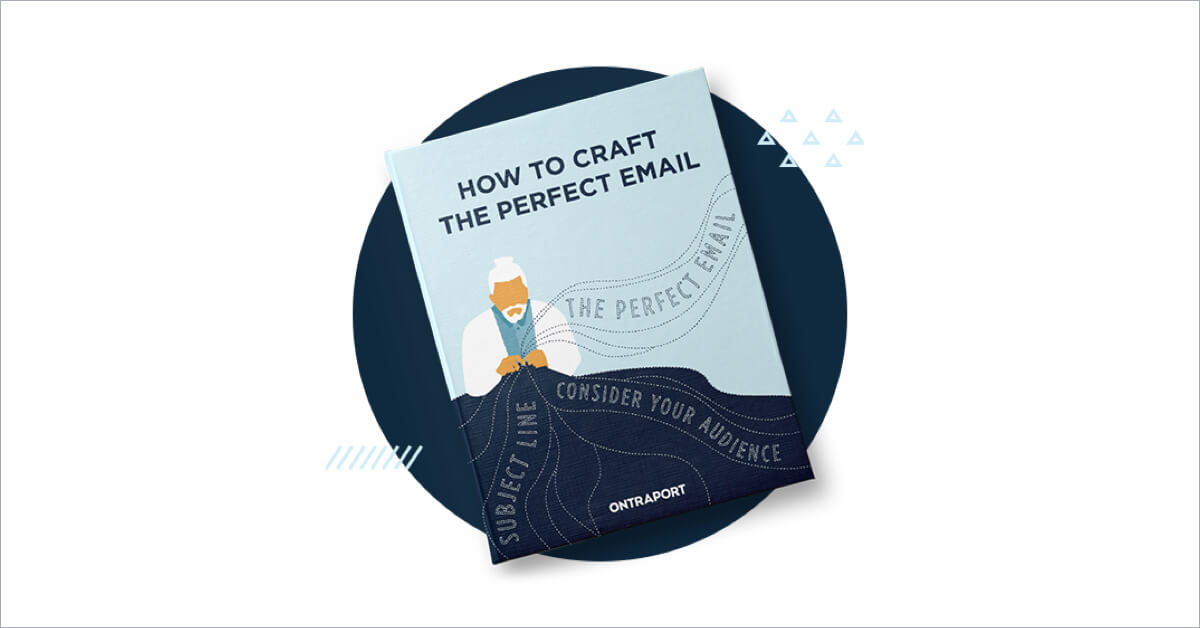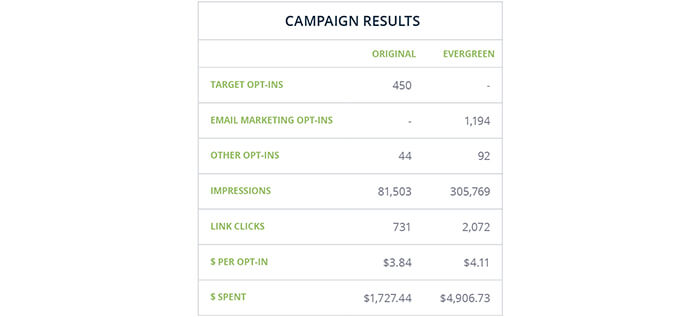
With the amount of businesses using Facebook as a core channel to obtain and retain leads, ensuring that your Facebook ad campaigns are a success is crucial.
Here’s a step-by-step outline for how to create a Facebook ad campaign, along with an in-depth analysis of how Ontraport’s marketing team implemented one of our own Facebook ad campaigns.
Step 1: Start Off Right With Clear Organization
Often overlooked, naming your campaign according to a designated naming convention is an important first step. It’ll come in handy when you or another member of your team later wants to organize or search for a given campaign.

For example, the naming system we use is:
Year: Month: Type: Asset: Category: Name
Once a campaign works, we plan to scale and keep it running at all times, thereby making it an “EVERGREEN” campaign — and we adjust the campaign’s name accordingly.
How it applies:
At Ontraport, we write ebooks and other content to educate prospective customers and provide them with valuable tips to implement in their business. With dozens of ebooks to promote, we stick to our naming conventions so we can easily find and track our campaigns. For example, one of our ebook Facebook ad campaigns is named: “2017: April: Lead Magnet: Ebook: Email Marketing: How to Craft the Perfect Email.” When we were able to scale the campaign, we renamed it “2017: April: Lead Magnet: Ebook: Email Marketing: How to Craft the Perfect Email – EVERGREEN.”
Step 2: Identify Your Key Performance Indicators and Goals

Before you write and design your ad, it’s important to understand the goal of the campaign. Are you aiming to drive clicks to a landing page? Is there a call-to-action on the landing page for the lead to click on?
Once you understand your overall campaign goal, you can determine the specifics of how much you intend to spend to achieve your goal.
How it applies:
With our “2017: April: Lead Magnet: Ebook: Email Marketing: How to Craft the Perfect Email” campaign, our goal is to provide a useful ebook in exchange for a lead’s email address so that we can then continue to communicate with the lead over time with additional valuable information. Based on our experience with similar lead magnets, we’ve determined that we ideally spend about $3 per opt-in for an ebook campaign. This number is based on how much we spend to get the lead, the time it takes for any particular lead to turn into a customer, and the cost of our product. We strive to hit a number that will provide us leads at a reasonable price while maintaining a profit.
Step 3: Find Your Facebook Target Audiences
After you’ve identified your campaign goals, it’s time to create an ad grid where you’ll place information about the audiences you’ll target as well as your ad copy and images. It is a best practice to start with your audiences so you know how to phrase your content and design the images to best get the attention of these audiences.
Finding the right audience for your Facebook ads is one of the most important steps in the entire campaign. If your ads are not displaying to the right people at the right time, then why bother?
Facebook provides a plethora of demographical data, geographical data, interest data and more for you to explore to create your target audiences. Facebook determines interests based on what people include on their Facebook profiles, as well as the pages and groups they’ve connected with and the sections they’ve filled out such as their favorite music, movies and TV shows.
It’s recommended to choose two or more audiences and only change one variable (such as geographic data or interests) to help you easily grasp who prefers the content you’re promoting and with whom it resonates
How it applies:
For our campaign, we created two audiences:


Both audiences targeted people aged 25-65+ who speak English and live in the United States, Canada, United Kingdom or New Zealand. They differed in that they targeted people with varying interests.
For audience #1, we focused on people whose interests related to ecommerce and startups as well as other marketing automation solutions on the market. For audience #2, we focused on those interested in small business as well as some of our company’s core offerings, such as email marketing, CRM, lead generation and landing page optimization.
By clumping similar interests together, and subsequently separating other interests into other ad sets, we can understand at-a-glance that the audiences who either use email delivery tools or who are more technically savvy when it comes to email marketing take a liking to our content about crafting a perfect email.
Step 4: Write Your Ad Copy
Now that you’ve got your audience, you can keep their demographics and interests in mind when writing your ads.
For example, when writing an ad to an audience that’s shown interest in a competitor, you might allude to something you have that the competitor doesn’t. When writing an ad to a more entry-level audience, you will use simpler and broader language than if you were writing to a group of experts and gurus.
How it applies:
For this campaign, we created two distinct “hooks,” or topics, for the ad copy. We named one “confidence” to relate to copy centered around the confidence visitors will gain after reading the ebook; we named the other set “waste” to encompass copy that hits the pain point of wasting time and money.


As you can see, the only major difference between the two is the body copy. We did this strategically to reduce the variances so we could fairly test the ads.
Step 5: Gather or Create Your Images/Design
The images you include with your ad are the first thing people will see when they look at the ad — so it’s important that they’re strong and enticing for your particular audience. Similar to when you write your ad copy, be sure to consider the types of images that would most resonate with your audiences while they scroll their Facebook newsfeed.
For example, an ad aimed at teenagers or young adults might use more colorful photos or even hand-drawn graphical imagery, while an ad aimed at a sophisticated group of business leaders might use muted and straightforward images of business people at work.
How it applies:
Based on previous ads, we’ve learned that showing the cover of our ebooks is successful in attracting clicks, so we consistently using ebook covers for our ads. This is most likely due to the consistency of seeing the imagery and wording on the ad through to conversion. As with any brand, we ensure that all our ebook designs reflect our brand standards and style so that we’re sending a consistent visual message to our audience.
During the initial launch of our ads, we ran two images with each set of copy and audience combination. The graphic within each image was the same, but one included our company name and the title of ebook so we could test if text made a difference.

vs.

Step 6: Track Your Results, and Optimize
The final step in running a Facebook ad campaign is to optimize it and track your results. After all, the whole reason for running ads is to achieve a particular goal. Facebook provides you with data about how many people from your target audience opted in, how many “impressions” (or overall views) the ad received, and how much you paid per opt-in based on the total you spent and the total number of opt ins.
Checking this information every day is important for ensuring your ad budget is staying on track, and you’re getting the results you aimed to achieve.
How it applies:
With the two audiences, two hooks and two images, we had a total of eight ad variations. We started running the initial campaign on April 4. After some optimization, we narrowed it down to the two winners and scaled into the evergreen campaign beginning April 12.
As of June 2, these were our results of each campaign:

According to the KPIs and the main goal we established before running the campaign, it has been a resounding success. As for the best of the best combination between all variations, the ad copy hook called Waste and the image that included our company name proved to be the overall winner.
Surprisingly, that specific ad copy and image combination worked in both audiences. The final ad as it appears on Facebook right now running to both audiences is below:

Step 7: Apply Lessons to Future Campaigns
When you are able to receive consistent results from an audience, ad copy and image, it can reveal the type of ads that resonate with the target audience. You can, therefore, create more ads in the future that mimic the same concepts that will hopefully perform at the same numbers or better as you optimize and get better with each iteration.
How it applies:
With the data we gained from our ebook campaign, we learned that having an image with the name of the asset and our name for brand recognition certainly helps with clicks and conversions. Also, we concluded that ad copy that revolves around a specific pain point, such as achieving bad results or wasting time, works better than a general topic.